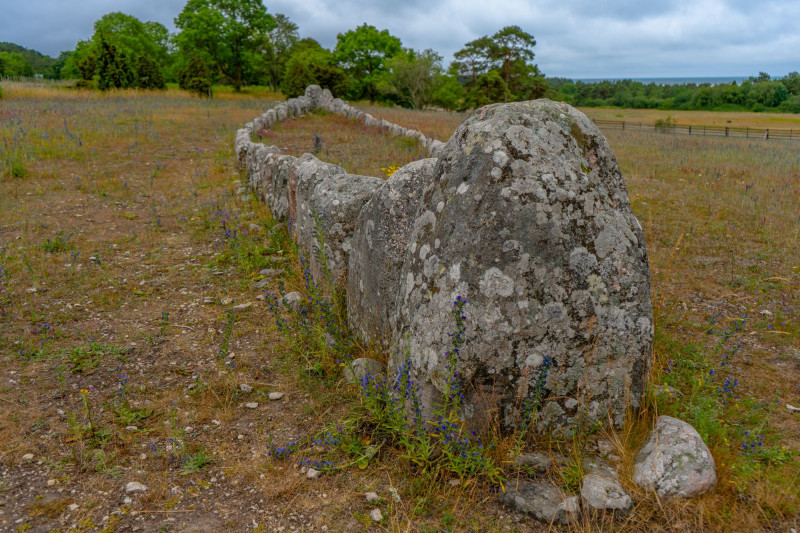During the excavations, archaeologists found the remains of 139 graves, with human and animal bones, metal fittings and ceramic vessels
Faced with a completely unexpected archaeological discovery, archaeologists found themselves in Sweden who were excavating to find an ancient settlement near the village of Tvååker, in the south of the country.
Instead of a settlement, the archaeologists identified a tlovely viking age cemeterywith more than 100 tombs, several in the shape of a ship.
During excavations carried out from 2017 to 2019, archaeologists found the remains of 139 graves, many of which included human and animal bones, metal fittings and ceramic vessels.
Additionally, large stones were strategically placed around several tombs, shaped like the boat of the ancient seafaring and warrior people.
A burial was particularly well organized.
According to excavation leader Petra Nordin, an archaeologist at Sweden’s National History Museums, the grave contained 17 vessels, human and animal bones, as well as woven weights and iron arrowheads.
“The square pit was a structure that helps create good air flow for cremation above ground,” the archaeologist said.
In the common burial ritual of the Viking Age (793-1066 AD), the body was cremated on a funeral pyre. Animals such as cows and pigs were then placed on top as “food sacrifices” and the tomb was closed.
A perimeter of large stones in the shape of a ship’s outline – known as a ‘stone ship’ – was then built around the grave.
According to Livescience, archaeologists also discovered a fragment of a silver coin from Arabia, which they dated to between 795 and 806, giving a general time frame for the burial site.
However, the settlement associated with the cemetery has not yet been found.
“Is it at the mouth of the river Tvååker or is it near the burial site? We don’t know,” said Nordin. “But it’s exciting to see what happens in the future,” he added.
Source :Skai
I am Frederick Tuttle, who works in 247 News Agency as an author and mostly cover entertainment news. I have worked in this industry for 10 years and have gained a lot of experience. I am a very hard worker and always strive to get the best out of my work. I am also very passionate about my work and always try to keep up with the latest news and trends.











